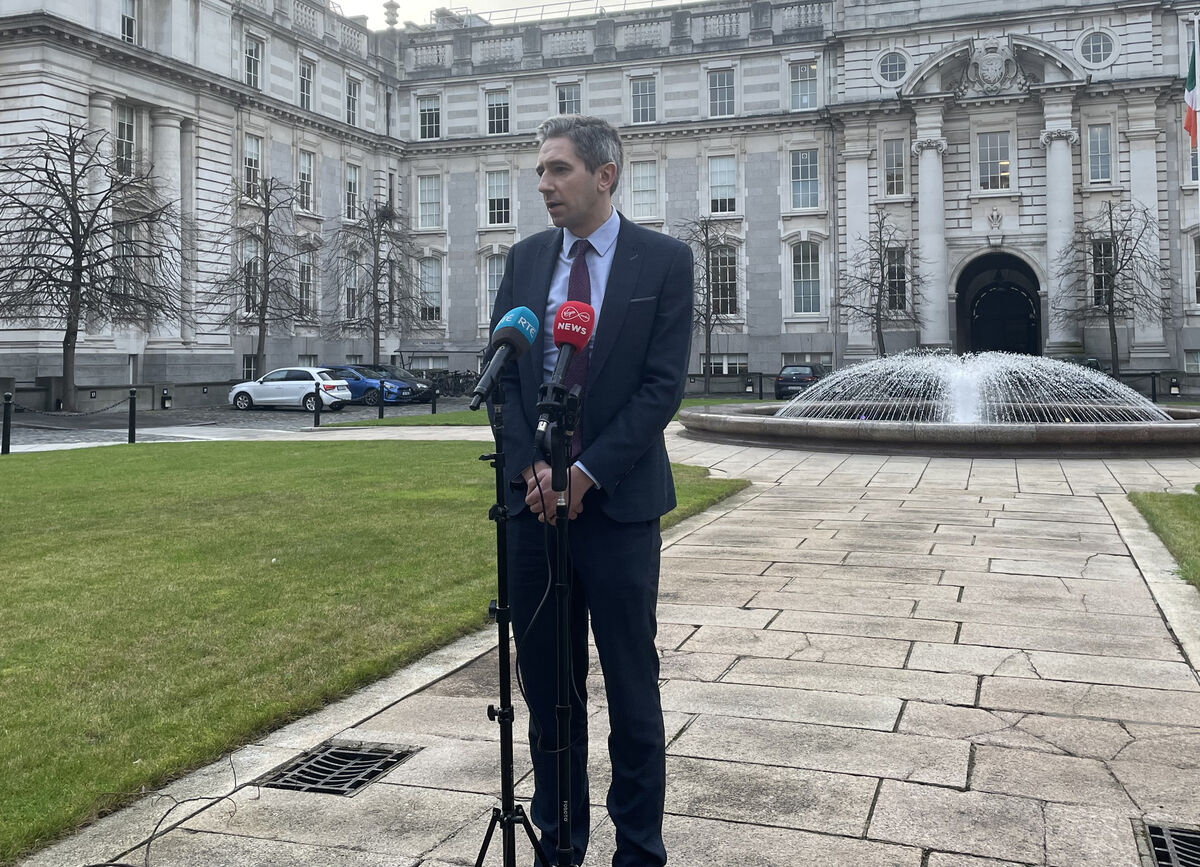Officials believe more than half of Ukrainians will stay in Ireland post-war

Members of the Ukrainian community in Ireland marching on a peaceful protest march towards the Ukrainian Embassy, on the date of both Ukrainian Independence Day and the six-month anniversary of the Russian invasion of Ukraine. Picture: Sam Boal/RollingNews.ie
Government officials believe 60% of Ukrainians that come to Ireland will remain here even after the war ends.
In a briefing document given to Minister Simon Harris when he took over temporary responsibility for the justice portfolio in recent weeks, Government officials outlined the reality of how many Ukrainians will remain in Ireland and the number of people seeking international protection.
The estimates are based on the number of people that were displaced during the Bosnian war in the 1990s.
“The likelihood of beneficiaries of temporary protection returning to Ukraine might be considered in the context of the Bosnian experience.
“There were 1.2m recorded refugees from Bosnia and Herzegovina between 1992 and 1995.
“Forty per cent repatriated between 1996 and 2005 while the remainder either stayed in their first host country or changed to a different country.
“While the legal basis under which temporary protection is being offered was a result of the Balkan experience, we should not assume that all Ukrainians will wish to immediately return home if and when the conflict ends,” the document read.
Over 70,000 Ukrainians have already arrived in Ireland with a similar figure expected to seek shelter here this year, which could see a total of 150,000 or more Ukrainians coming to Ireland.

In recent days, the Citywest refugee processing centre closed to new arrivals due to capacity issues, with Minister for Integration Roderic O'Gorman warning of “a very real risk” that not every new arrival could be accommodated.
Mr Harris was also briefed that this year will likely see immigration-related activity higher than 2022, which in some instances exceeded pre-Covid-19 levels.
The department has also recommended reintroducing deportations, which had been paused throughout the pandemic, and is working with carriers to implement measures aimed at reducing the number of persons arriving with false documents.
A chart dated up to September 30, 2022 shows there were 104,916 visa applications, this is despite some travel restrictions in place in early 2022 due to the pandemic.
“Given that we were still experiencing some travel restrictions in early 2022, and that China, a significant user of visas, continues to operate under a lockdown, it is likely 2023 activity will be higher again,” the ministerial brief reads.

Government officials highlighted that there are similar increases evident across all of the immigration service delivery operations.
Registrations to the end of September, which is required for those staying in the State more than three months, is up 65% on the same period in 2021.
While international protection applications are up sevenfold, excluding the almost 70,000 Ukrainians who have arrived under the temporary protection directive.
Between 2008 and 2021, there were just under 34,000 asylum applications but in 2022 at the end of September, a further 10,000 applications were made.
Within the same period, 55,600 temporary protection applications were processed for those fleeing the war in Ukraine.
Over the past year, a scheme to regularise long-term undocumented migrants and their eligible dependents where specific criteria are met was implemented.
The scheme closed in July 2022 and there were 6,548 applications in respect of 8,311 applicants.
Of the decisions issued to December 12, 2022, 97% were “positive” the department said.
Eligible applicants must have had a period of four years’ residence in the State without an immigration permission.
A parallel strand within this scheme allows for applications from those with an outstanding application for international protection and have been in the asylum process for a minimum of two years.
There were 3,193 applicants under this stream by December 9, 2022 of which 2392 permissions were issued.
Additionally there had been 238 withdrawals from the International protection process and 379 refusals and by mid-October last year, a little under 800 applications were awaiting decisions, according to officials.
The document also highlights the importance and positive effect inward migration for the Irish labour market considering there is a “population bubble” who will be retiring in 15-25 years, those currently aged between 40 and 49 and this will “support the payment of future pensions,” officials said.












